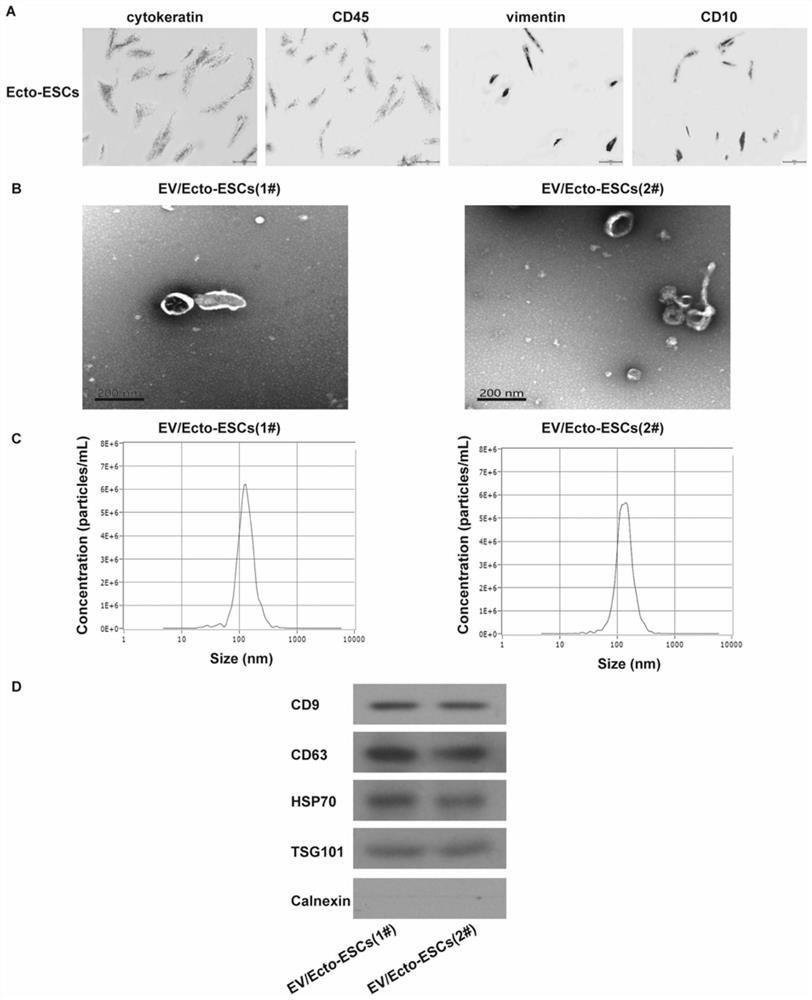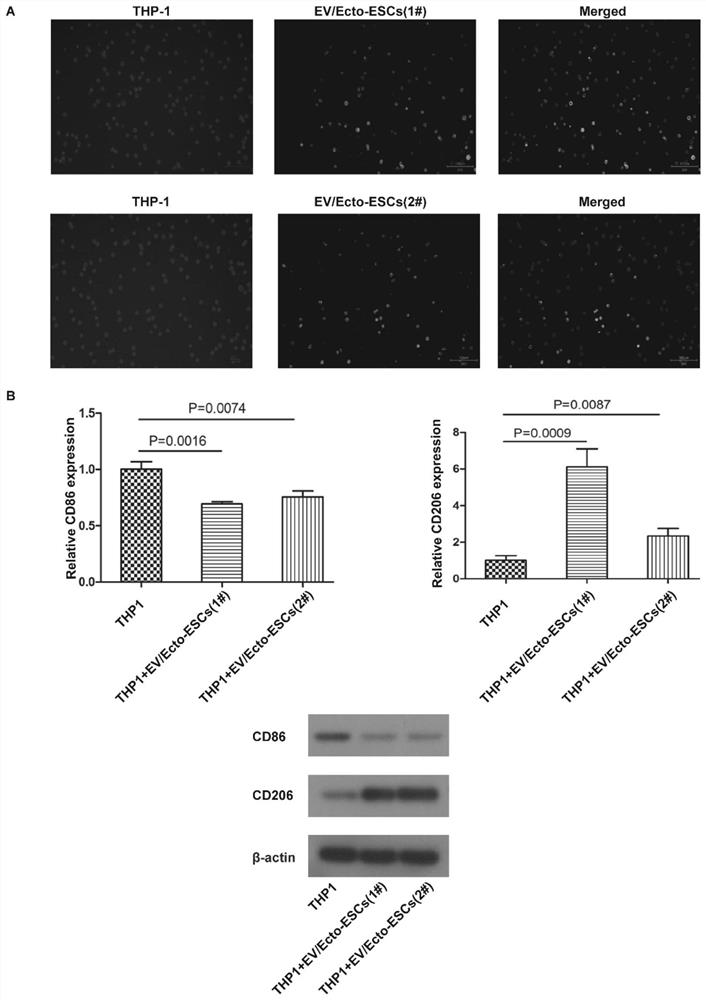Use of serum microvesicle-asparagine endopeptidase pseudogene 1 in the diagnosis and recurrence prediction of endometriosis
A technology of asparagine and microvesicles is applied in the field of medical detection to achieve the effect of obvious technical effect
- Summary
- Abstract
- Description
- Claims
- Application Information
AI Technical Summary
Problems solved by technology
Method used
Image
Examples
Embodiment 1
[0016] Example 1 Extraction and identification of microvesicles (EV / Ecto-ESCs) in the supernatant of ectopic endometrial stromal cells (Ecto-ESCs)
[0017] Cell supernatant microvesicle extraction and identification process:
[0018] 1) Primary culture of ectopic endometrial stromal cells (1# and 2# Ecto-ESCs)
[0019] 2) Ecto-ESCs were identified by immunohistochemical method and specific markers such as vimentin (vimentin), cytokeratin (keratin), CD45 and CD10.
[0020] 3) The microvesicles in the supernatant of the above cells were extracted with a microvesicle extraction kit ExoQuick EV precipitation solution kit (catalogueno. EXOTC50A-1; System Biosciences, Palo Alto, California).
[0021] 4) Transmission electron microscope (TEM) identification of microvesicles: Take 20ul of the microvesicle solution obtained above, add 20uL of PBS to dilute it, and then drop it onto a copper wire mesh specially designed for microscopy, place at room temperature for 3 minutes, and let i...
Embodiment 2
[0025] Example 2 Microvesicles (EV / Ecto-ESCs) secreted by ectopic endometrial stromal cells are endocytosed by recipient cells THP-1 and induce THP-1 polarization to M2 macrophages
[0026] Microvesicle labeling and endocytosis experiments:
[0027] 1) The microvesicles were labeled with the green dye PKH67 (green dye, Sigma-Aldrich, St. Louis, MO, USA).
[0028] 2) Microvesicles (EV / Ecto-ESCs) secreted by ectopic endometrial stromal cells were co-cultured with the receptor THP-1, and the endocytosis of microvesicles was observed by fluorescence microscope after 16 hours.
[0029] Validation of receptor cell THP-1 polarization towards M2 macrophages:
[0030]The expression of specific M1-type molecule CD86 and M2-type molecule CD206 in THP-1 cells was identified by real-time quantitative PCR and Western blot. GAPDH was used as an internal reference in qRT-PCR, and the primer sequences were as follows.
[0031] Table 1 CD86, CD206 primer sequences
[0032] Target G...
Embodiment 3
[0038] Example 3 Overexpressed EV-LGMNP1 secreted by donor Ecto-ESCs can promote the polarization of recipient cells THP-1 to M2 macrophages and upregulate the downstream target gene LGMN
[0039] Construction of overexpression lentiviral vector and cell transfection experiment
[0040] 1) Construction of lentiviral vector: select lentiviral vector, select specific primers according to the primer design principle, and specifically amplify the LGMNP1 gene fragment (from: >NC_000013.11:c64959518-64957561Homo sapienschromosome 13,GRCh38.p13 Primary Assembly, such as SEQ ID NO.1). The gene fragment LGMNP1 was connected to the digested lentiviral vector through the restriction sites at both ends, and then transferred into the prepared competent bacteria. After cultivation, the monoclonal colonies were identified by PCR, and then sequenced, compared and selected. A lentiviral vector overexpressing LGMNP1 was successfully expressed.
[0041] 2) Lentiviral packaging and assay: Use t...
PUM
 Login to View More
Login to View More Abstract
Description
Claims
Application Information
 Login to View More
Login to View More - R&D
- Intellectual Property
- Life Sciences
- Materials
- Tech Scout
- Unparalleled Data Quality
- Higher Quality Content
- 60% Fewer Hallucinations
Browse by: Latest US Patents, China's latest patents, Technical Efficacy Thesaurus, Application Domain, Technology Topic, Popular Technical Reports.
© 2025 PatSnap. All rights reserved.Legal|Privacy policy|Modern Slavery Act Transparency Statement|Sitemap|About US| Contact US: help@patsnap.com



